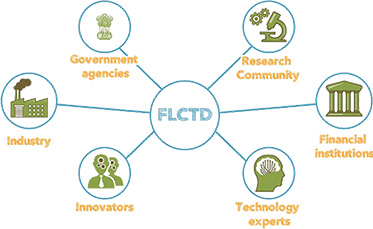Facility for Low Carbon Technology Deployment (FLCTD) is jointly implemented by the Bureau of Energy Efficiency (BEE) and the United Nations Industrial Development Organization (UNIDO). FLCTD is supported by the Global Environment Facility (GEF).
This 5-year project aims to promote innovation of low-carbon technologies and its deployment in industrial and other related sectors of Indian economy. The project will conduct annual 'Innovation Challenge' competitions that will identify innovative low carbon technologies and solutions to improve efficient end-use of energy, which in turn will help to reduce greenhouse gas emissions in the long run. The project will promote the deployment of winning technologies.
FLCTD is guided by the need for competition and market orientation in cleantech innovations in India. Hence the project will support cleantech innovations established in the demands of the industries and shall support early adopters via deployment support. The project aims to catalyze technology diffusion while strengthening low carbon technology entrepreneurship by maintaining strong Intellectual Property rights and promoting an overall innovation ecosystem in the country.
FLCTD is designing and conducting “Innovation Challenges” in three technology areas:



These high-impact innovation challenges if solved have the potential for create large-scale carbon emission reductions, via wide technology deployment. Hence through innovation challenges FLCTD will identify innovations. Winning technologies will be provided support for demonstration.
